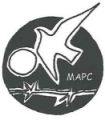October 28, 2002
I am the Egg Man
Let there be no doubt: In Kate Bulkley’s excellent article in The Guardian about blogging and wifi, I am Mr. Laptop.

October 28, 2002
Let there be no doubt: In Kate Bulkley’s excellent article in The Guardian about blogging and wifi, I am Mr. Laptop.
Jon Udell uses my blog about the phone number trick at Google to talk about what happens when what used to be public but obscure becomes public and easily accessible.
He also mentions the IETF ENUM initiative “which seeks a mapping between telephone numbers and the DNS.” The official IETF white paper on usage scenarios of this mapping says:
In a pure IP environment, ENUM will allow end users to be identified by a commonly used name (i.e., their telephone number) for a variety of applications. … [E]nd users can change IP service providers without having to change their destination identification. For example, an end user can change their underlying e-mail address from [email protected] to [email protected] but, with ENUM set up to handle e-mail … still be reached by having ENUM-enabled mail clients send mail addressed to their ôtelephone numberö (e.g., mailto:+1-973-236-6787).
For voice services, ENUM will allow the easy end user identification described above as well as interworking between terminals [phones] on the PSTN and on the IP-based network. It may also allow for the implementation of more advanced services, such as find-me. For voice communication starting on an IP-based network, ENUM can be used on each call to determine the preferred type of destination based on the priority of the network termination available. For voice communication starting on the PSTN, ENUM is more likely to be used where at least one of the destinations of the call exists on an IP-based network.
I don’t know enough to have an opinion. If you do, lemme know.
Frank Paynter responds to my blog about designing a new peace symbol:
In the age of hip-hop, local students didn’t want to associate with the super-annuated ND semaphore signal. The symbol we adopted isn’t as easily sketched, but it makes a nice logo. Here‘s what we came up with, after heartfelt discussions last winter (logo is in upper left corner)

Nice connecting of peace and freedom, but I think the new symbol does have to be scribblable by people who recently ingested 100-250mgs of hallucinogens, just as a practical matter.
Fox proposes televised coverage of arms inspectors in Iraq so “Viewers could decide for themselves if the inspectors are being allowed to do their jobs”?
A pyramid scheme for “Women Helping Women” sweeps the nation?
A movie featuring stupid, gross stunts is #1 at the box office?
Please, people, this is what we have the Web for!
October 27, 2002
I’ve published a new issue of my free newsletter:
ContentsDigital ID: Four lessons from the DigitalID World |
Free subscription, no ads, no spam…you know, it wouldn’t kill you to sign up for it.
Eric Norlin responds to the article in my newsletter on the DigitalID World conference. [Note: Eric reports that he’s having trouble with his permalinks.]
Also, you don’t want to miss his response to my peacenik blog.
Stanton Finley has sent a message to a bunch o’ bloggers and others asking us to re-design the peace symbol.
The old peace symbol represents the letters “ND” in semaphor language. Since Nuclear Disarmament no longer tops the peacenik agenda, we could indeed use a new symbol.

I am refraining from suggesting my proposed “Forgive me” hand gesture, but I have no other ideas. Suggestions anyone?

Stan also asks us for a “manifesto” of peace. Here’s mine. (Prepare for Hippie Resurgence Syndrome.)
All people are created equal. We all have an equal right to life, liberty, and the pursuit of happiness.
All people are created different. There is value in that difference and we need to preserve it.
All people are connected. We are connected by geography and responsibility, and, if we would let it, by love.
Jock Gill, Clinton’s original tech advisor, has posted a column on a piece he thinks is missing from Paul Krugman‘s essay.
Jock agrees with Krugman about the economic divide: the top 1% of Americans have doubled their share of the nation’s wealth in the past 30 years, while the median income has grown only 10% in the same time. But he disputes Krugman’s claim that “Gilded Ages and Gilded Plutocrats, not relative middle-class income equality, are the norm in American life.” Not before the Robber Barons, Jock says, because there weren’t yet corporations that “never die and do not vote, yet have the full legal and constitutional rights, and wealth that never dies even when the humans do.” The result is a corrupt political system that favors the rich.
Here’s why I’m depressed: We don’t care. We somehow believe we’re in an economy of abundance so the fact that the top 1% have the wealth of the bottom 40% doesn’t matter to us so long as we feel ok about ourselves. And when was the last time you heard a politician talk about the poor as anything except a burden to the rest of us? Or look beyond our borders to see the effect of our life on others, much less accept a moral responsibility to help raise up the world?
Except when Paul Wellstone spoke.
Speaking of Big Lies, Brad DeLong does a ripsnortin’ job on Chuck Grassley’s letter to the editor in the NY Times. Ironically, the letter purports to set the record straight about who gets what in the Bush tax cut plan, but Brad exposes the letter is a pack of untruths. (Thanks to Scott Rosenberg for the link.)
October 26, 2002
Kevin Werbach has a terrific article on decentralization at news.com:
Centralized systems are failing for two simple reasons: They can’t scale, and they don’t reflect the real world of people.
This is the theme of his upcoming Supernova conference. (I’m going.)
Peter Kaminski responds to my neologizing “Google URLs” (“A search query that puts a page at the top of Google’s returns list”):
“Google URLs” are the same as the mechanism behind Robust Hyperlinks (For a joke intro, start here.)
Robust Locations there is a pretty cool trick, too.
You make a page robust, according to this paper, by running their free, open source software that adds a “lexical signature” about five words long, a hash of your document content. People can find your page by searching for its signature, so even if you move the page, Google (or whatever) will find it for you.
The problem is that the signature isn’t necessarily memorable. For example, the signature of www.cluetrain.com is “html intranetworked uznajut happytalk stemmens” whereas its Google URL is “cluetrain.”
Norm Jenson points out that (as I’d blogged) when you search on your phone number at Google (in quotes, no hyphens) and it finds your address and gives you a link to a Yahoo! map of where you live, Yahoo also lets you generate code you stick on your web page to take friends and burglars to your site.